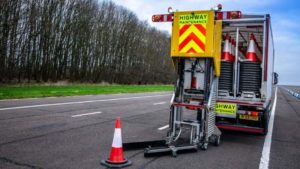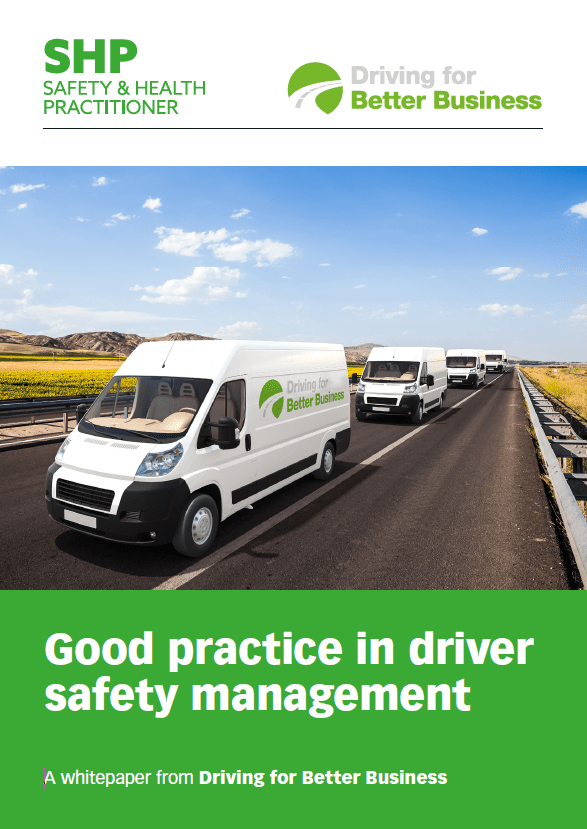A pioneering cone-laying vehicle is set to eliminate the need for roadworkers to do the job from the back of a truck, after successful tests on British roads.

Image courtesy of Highways England
Following extensive off-road testing, an automated cone laying vehicle has been trialled on the road network for the first time.
The vehicle, developed by Highways England and a group of industry experts, avoids the need for two people to manually lift and drop the cones.
Aside from the obvious risk from traffic, the vehicles could have added ergonomic benefits to workers, who currently can lift as much as 10 tonnes of equipment per shift.
To date, experts have struggled to identify a suitable method of placing and removing cones that doesn’t have an impact on workers due to the twisting of the body required or a vehicle that does not require any workers on the back.
The two vehicles being tested are operated solely by the driver, improving safety and freeing up two workers to carry out other tasks.
The first vehicle, created by Highway Care, is being trialled on the Highways England road network. The second, developed by competitor King Highway Products, is currently undergoing testing in Holland and will shortly be trialled off-road in the UK.
As part of the test, they are required to lay/collect at least 400 cones at a rate of one every 10 seconds. If the tests prove successful, the two companies will be able to take their vehicles to the marketplace.
Tests have been carried out on A5 and M54 in Shropshire. Further testing is set to take place on the M4 in Berkshire. If they prove successful, the vehicles could be in use by the end of the year.
Highways England Head of Lean and Continuous Improvement Martin Bolt, who oversees the project, said: “The implications of these vehicles in protecting the safety of workers are immense and we are delighted that testing is progressing so well. By taking the human element out of laying cones we are eliminating one of the greatest risks for road workers.
“We have received a lot of support from the industry as a whole for the automated vehicle and we are now getting some very positive feedback from those workers who have been trialling the Highways Care prototype on the live roads network.
“If this testing proves as successful as we anticipate it will, motorists could be spotting more of these automated cone laying vehicles on the roads by the end of the year.”
Kier General Foreman Stuart Pegg, who used the vehicle to put out traffic management on the A5, said: “It was great to be invited to participate in this ground-breaking advancement in traffic management. We have ironed out a few initial teething problems and I found the automated cone laying vehicle easy to use. It performed above my personal expectations.”
This eBook will guide you through some of the key understandings you need to be able to manage driver safety effectively and, at the end, provide a series of free resources you can access to help you ensure your own driver safety management system is robust, legally compliant and in line with industry-accepted good practice.
Download this eBook from Driving for Better Business and SHP to cover:
- Why do we need to manage driver safety?
- Duty of care – a shared responsibility;
- Setting the rules with a driving for work policy;
- Managing driver safety;
- Ensuring safe vehicles;
- Safe journeys and fitness to drive;
- Record keeping;
- Reporting;
- The business benefits of good practice;
- Additional resources


